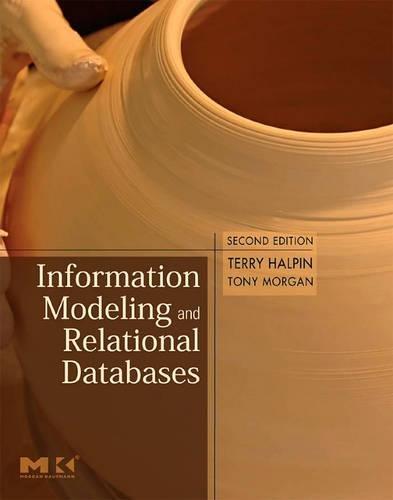Question
The code below creates 3 3x3 boxes of . and adds an ant (A) in a random location. You can run the code and realize
The code below creates 3 3x3 boxes of "." and adds an ant ("A") in a random location. You can run the code and realize what I mean.
I want to be able to, in Java, 1) make sure the space is null and generate a random direction in the grid array, 2) let Ant move to a random direction using the move method and 3) finish the move method in Doodlebug with the same behavior.
For example, to go up in the grid, it would say grid [ant.x-1] [ant.y]
down: grid [ant.x+1] [ant.y]
left: grid [ant.x] [ant.y-1]
right: grid [ant.x] [ant.y+1]
Also, I wasn't sure how to post the code, it came out in a weird table, I apologize.
-------------------------------------------------------------
| abstract public class Critter { | |
| protected World myWorld; // know in which world the critter lives | |
| protected int x, y; // Position in the world | |
| abstract public void move(); | |
| public Critter(World world, int rIndex, int cIndex){ | |
| myWorld = world; | |
| x = rIndex; | |
| y = cIndex; | |
| } | |
| public abstract void display(); | |
| } |
-----------------------------------------------------------------------------
| import java.util.Random; | |
| public class Ant extends Critter { | |
| public Ant(World world, int rIndex, int cIndex) { | |
| super(world, rIndex, cIndex); | |
| } | |
| public void move(){ | |
| //System.out.println("ant move"); | |
| //todo: | |
| // Check whether the cell below is available | |
| // | |
| // If the cell below is available | |
| //(the cell is not out of boundary and is empty), | |
| // put the ant to the next cell | |
| // Else: the ant does not move | |
| int gridsize = this.myWorld.getGridSize(); | |
| int newx = this.x+1; | |
| if(newx >= gridsize) | |
| { return; | |
| } | |
| Critter cell = this.myWorld.getCell(this.x+1,this.y); | |
| if( cell == null) | |
| this.myWorld.setCell(this.x+1, this.y, this); | |
| this.myWorld.setCell(this.x, this.y, null); | |
| } | |
| public void display() | |
| { | |
| System.out.print('A'); | |
| } | |
| //if idex is (i, j) -- to get to the cell below it (i +1, j) | |
| } |
---------------------------------------------------------------------
| public class Doodlebug extends Critter { | |||||||||||||||||||||||||||||||||||||||||||||||||||||||||||||||||||||||||||||||||||||||||||||||||||||||||||||||||||||||||||||||||||||||||||||||||||||||||||||||||||||||||
| public Doodlebug(World world, int rIndex, int cIndex) { | |||||||||||||||||||||||||||||||||||||||||||||||||||||||||||||||||||||||||||||||||||||||||||||||||||||||||||||||||||||||||||||||||||||||||||||||||||||||||||||||||||||||||
| super(world, rIndex, cIndex); | |||||||||||||||||||||||||||||||||||||||||||||||||||||||||||||||||||||||||||||||||||||||||||||||||||||||||||||||||||||||||||||||||||||||||||||||||||||||||||||||||||||||||
| } | |||||||||||||||||||||||||||||||||||||||||||||||||||||||||||||||||||||||||||||||||||||||||||||||||||||||||||||||||||||||||||||||||||||||||||||||||||||||||||||||||||||||||
| public void move(){ | |||||||||||||||||||||||||||||||||||||||||||||||||||||||||||||||||||||||||||||||||||||||||||||||||||||||||||||||||||||||||||||||||||||||||||||||||||||||||||||||||||||||||
| //System.out.println("doodlebug move"); | |||||||||||||||||||||||||||||||||||||||||||||||||||||||||||||||||||||||||||||||||||||||||||||||||||||||||||||||||||||||||||||||||||||||||||||||||||||||||||||||||||||||||
| } | |||||||||||||||||||||||||||||||||||||||||||||||||||||||||||||||||||||||||||||||||||||||||||||||||||||||||||||||||||||||||||||||||||||||||||||||||||||||||||||||||||||||||
| @Override | |||||||||||||||||||||||||||||||||||||||||||||||||||||||||||||||||||||||||||||||||||||||||||||||||||||||||||||||||||||||||||||||||||||||||||||||||||||||||||||||||||||||||
| public void display() | |||||||||||||||||||||||||||||||||||||||||||||||||||||||||||||||||||||||||||||||||||||||||||||||||||||||||||||||||||||||||||||||||||||||||||||||||||||||||||||||||||||||||
| { | |||||||||||||||||||||||||||||||||||||||||||||||||||||||||||||||||||||||||||||||||||||||||||||||||||||||||||||||||||||||||||||||||||||||||||||||||||||||||||||||||||||||||
| System.out.print('D'); | |||||||||||||||||||||||||||||||||||||||||||||||||||||||||||||||||||||||||||||||||||||||||||||||||||||||||||||||||||||||||||||||||||||||||||||||||||||||||||||||||||||||||
| } | |||||||||||||||||||||||||||||||||||||||||||||||||||||||||||||||||||||||||||||||||||||||||||||||||||||||||||||||||||||||||||||||||||||||||||||||||||||||||||||||||||||||||
| } -------------------------------------------------
-------------------------------------------------------------------
|
Step by Step Solution
There are 3 Steps involved in it
Step: 1

Get Instant Access to Expert-Tailored Solutions
See step-by-step solutions with expert insights and AI powered tools for academic success
Step: 2

Step: 3

Ace Your Homework with AI
Get the answers you need in no time with our AI-driven, step-by-step assistance
Get Started


